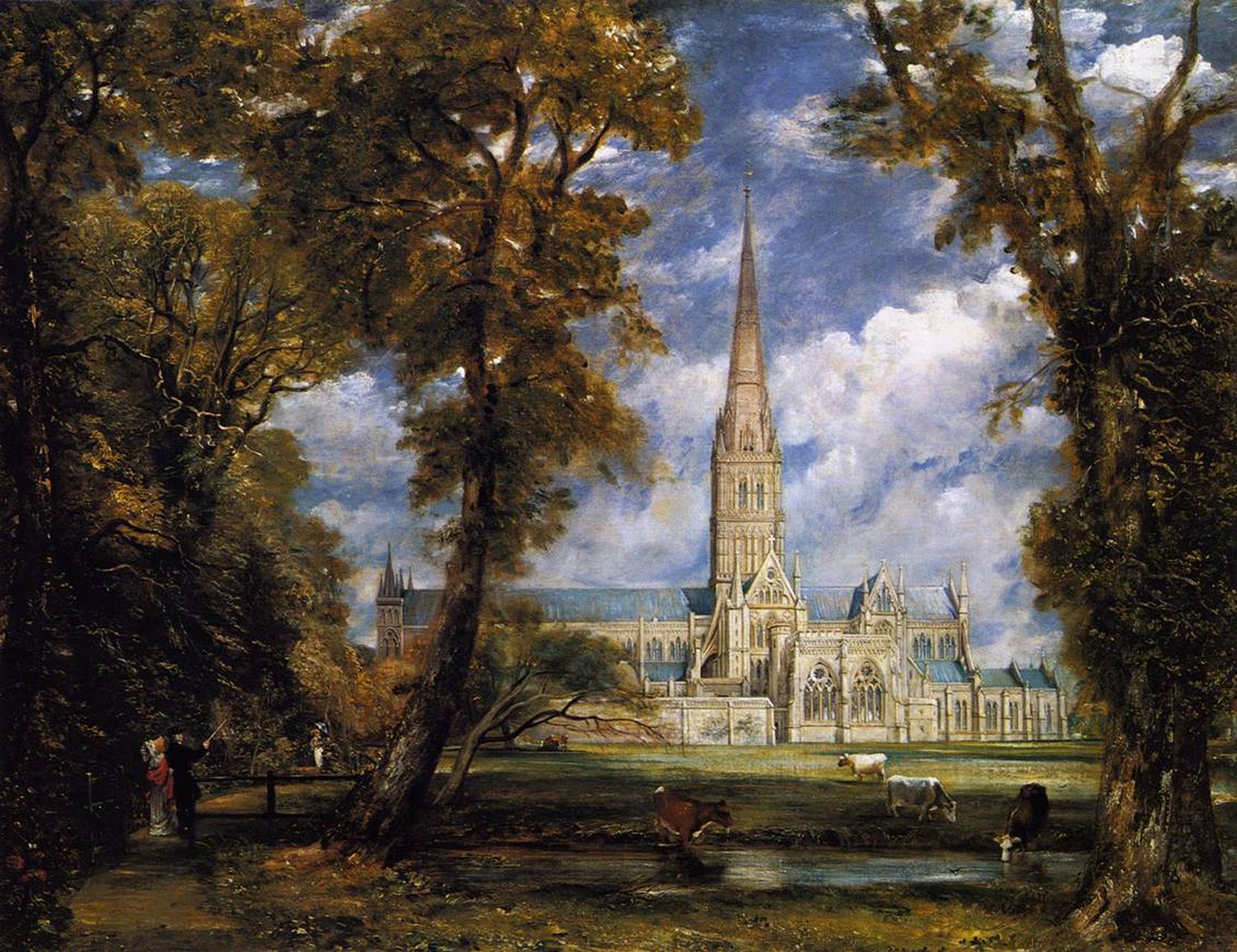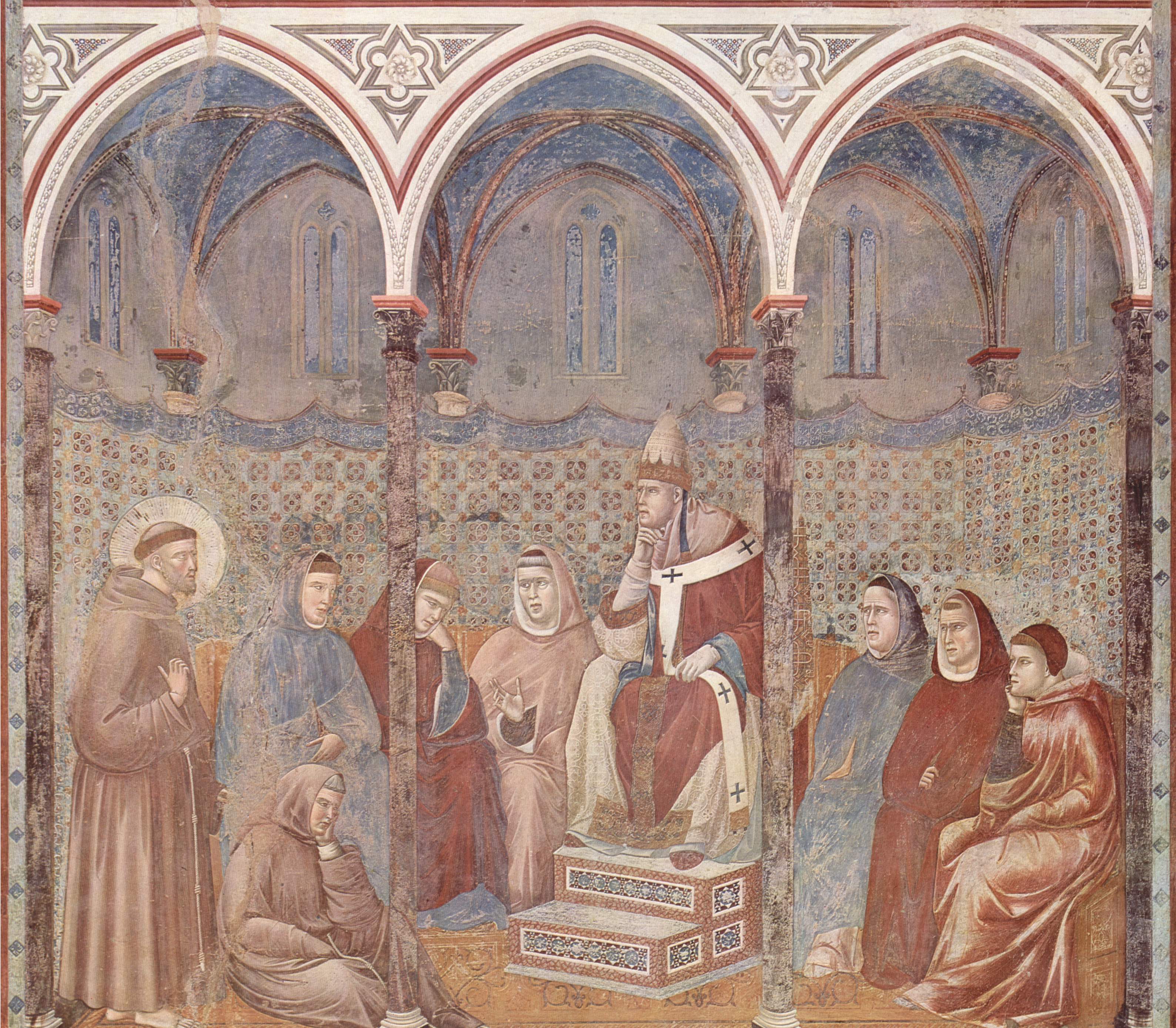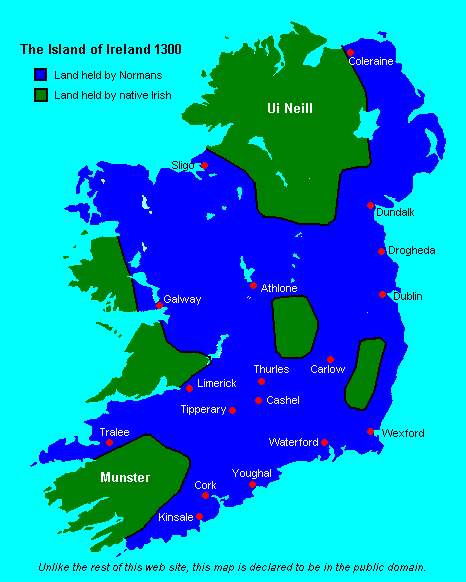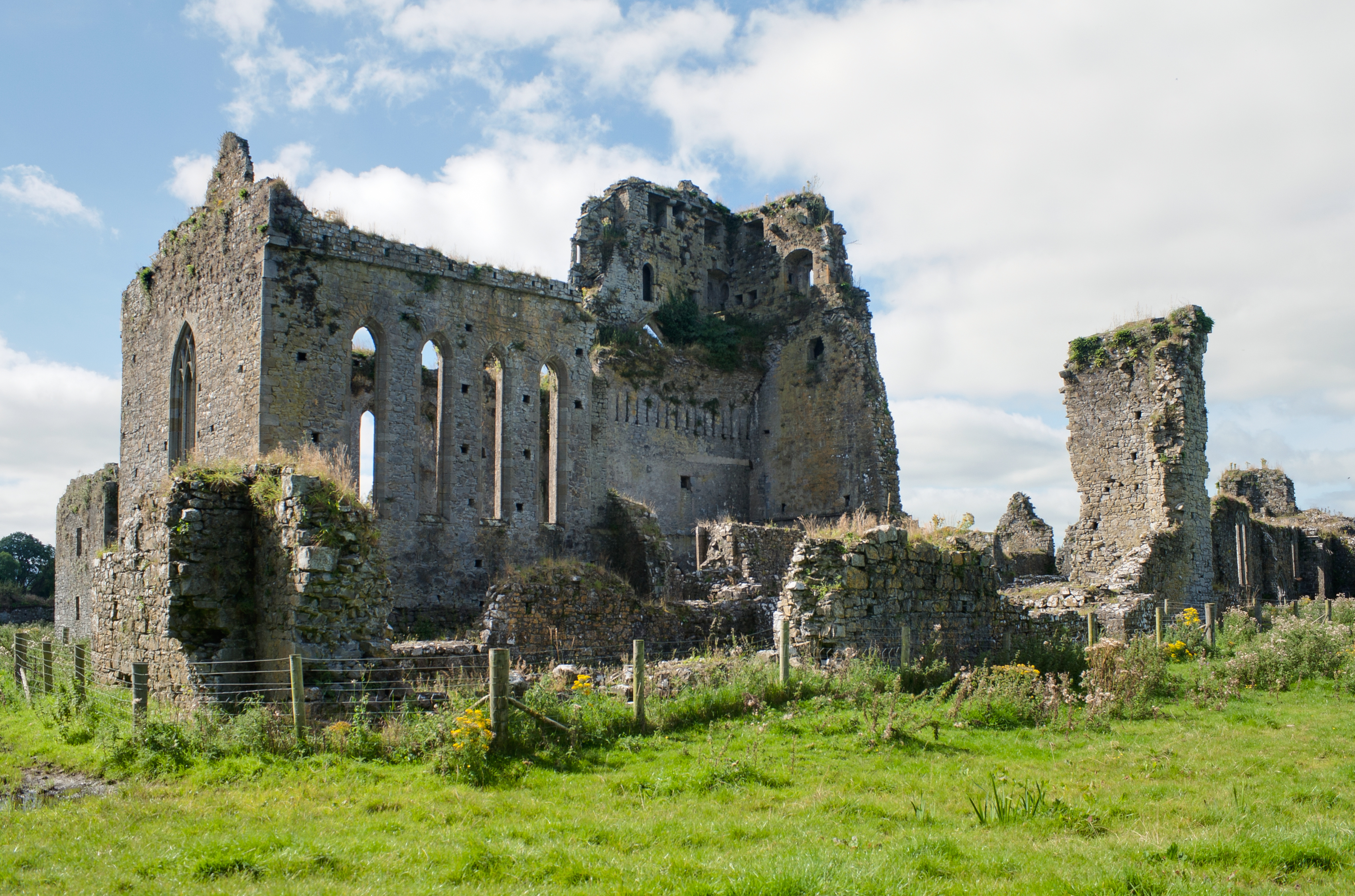|
Geoffrey De Burgo
Geoffrey de Burgh ( , ; 1180 – 8 December 1228) was a medieval English cleric who was Archdeacon of Norwich (1200–1225), Bishop of Ely (1215–1219, 1225–1228) and the brother of William de Burgh and Hubert de Burgh, 1st Earl of Kent. Life Geoffrey de Burgh was the younger brother of William de Burgh, Lord of Connacht, Hubert de Burgh, Earl of Kent, and Thomas de Burgh, Castellan of Norwich.Karn "Burgh, Geoffrey de" ''Oxford Dictionary of National Biography'' He was born no later than 1180 or so (based on his appointment as archdeacon in 1200). The name of his father is not known, but his mother's name was Alice and the family were from Norfolk, being of knightly status. The name is likely in reference to either Burgh next Aylsham or Burgh Castle. Geoffrey was Canon of Salisbury Cathedral and Treasurer of the Exchequer before being named Archdeacon of Norwich (1200).Greenway Fasti Ecclesiae Anglicanae 1066–1300: Volume 2: Monastic Cathedrals (Northern and So ... [...More Info...] [...Related Items...] OR: [Wikipedia] [Google] [Baidu] |
Bishop Of Ely
The Bishop of Ely is the Ordinary (officer), ordinary of the Church of England Diocese of Ely in the Province of Canterbury. The diocese roughly covers the county of Cambridgeshire (with the exception of the Soke of Peterborough), together with a section of north-west Norfolk and has its episcopal see in the Ely, Cambridgeshire, City of Ely, Isle of Ely in Cambridgeshire, where the seat is located at the Ely Cathedral, Cathedral Church of the Holy Trinity. The diocesan bishops resided at the Old Palace, Ely, Bishop's Palace, Ely until 1941; they now reside in Bishop's House, the former cathedral deanery. The roots of the Diocese of Ely are ancient and the area of Ely was part of the patrimony of Æthelthryth, Saint Etheldreda. Prior to the elevation of Ely Cathedral as the seat of the diocese, it existed as first as a convent of religious sisters and later as a monastery. It was led by first by an abbess and later by an abbot. The convent was founded in the city in 673. After S ... [...More Info...] [...Related Items...] OR: [Wikipedia] [Google] [Baidu] |
Pope Honorius III
Pope Honorius III (c. 1150 – 18 March 1227), born Cencio Savelli, was head of the Catholic Church and ruler of the Papal States from 18 July 1216 to his death. A canon at the Basilica di Santa Maria Maggiore, he came to hold a number of important administrative positions, including that of Camerlengo. In 1197, he became tutor to the young Frederick II. As pope, he worked to promote the Fifth Crusade, which had been planned under his predecessor, Innocent III. Honorius repeatedly exhorted King Andrew II of Hungary and Emperor Frederick II to fulfill their vows to participate. He also gave approval to the recently formed Dominican and Franciscan religious orders. Early work He was born in Rome as a son of Aimerico, a member of the Roman Savelli family. For a time canon at the church of Santa Maria Maggiore, he later became Camerlengo of the Holy Roman Church on December 5, 1189 and Cardinal Deacon of Santa Lucia in Silice on 20 February 1193. Under Pope Clement III and P ... [...More Info...] [...Related Items...] OR: [Wikipedia] [Google] [Baidu] |
Hiberno-Norman
Norman Irish or Hiberno-Normans (; ) is a modern term for the descendants of Norman settlers who arrived during the Anglo-Norman invasion of Ireland in the 12th century. Most came from England and Wales. They are distinguished from the native Gaelic Irish; although some Normans eventually became Gaelicised. The Hiberno-Normans were a feudal aristocracy and merchant oligarchy who controlled the Lordship of Ireland. The Hiberno-Normans were associated with the Gregorian Reform of the Catholic Church in Ireland and contributed to the emergence of a Hiberno-English dialect. Some of the most prominent Hiberno-Norman families were the Burkes (de Burghs), Butlers, and FitzGeralds. One of the most common Irish surnames, Walsh, derives from Welsh Normans who arrived in Ireland as part of this group. Some Norman families were said to have become " more Irish than the Irish themselves" by merging culturally and intermarrying with the Gaels. The dominance of the Catholic Hibern ... [...More Info...] [...Related Items...] OR: [Wikipedia] [Google] [Baidu] |
Anglo-Normans
The Anglo-Normans (, ) were the medieval ruling class in the Kingdom of England following the Norman Conquest. They were primarily a combination of Normans, Bretons, Flemings, French people, Frenchmen, Anglo-Saxons and Celtic Britons. After the conquest the victorious Normans formed a ruling class in England, distinct from (although intermarrying with) the native Anglo-Saxon and Celtic populations. Over time, their language evolved from the continental Old Norman to the distinct Anglo-Norman language. Anglo-Normans quickly established control over all of England, as well as Norman invasion of Wales, parts of Wales (the Cambro-Normans, Welsh-Normans). After 1130, parts of southern and eastern Scotland came under Anglo-Norman rule (the Scoto-Norman, Scots-Normans), in return for their support of David I of Scotland#Government and feudalism, David I's conquest. The Anglo-Norman invasion of Ireland from 1169 saw Anglo-Normans and Cambro-Normans conquer swaths of Ireland, becomi ... [...More Info...] [...Related Items...] OR: [Wikipedia] [Google] [Baidu] |
House Of Burgh
The House of Burgh (; ; ), also known by the family names of Burke and Bourke (), is an Ireland, Irish family, descending from the Anglo-Normans, Anglo-Norman de Burgh dynasty, who played a prominent role in the Anglo-Norman invasion of Ireland, where they settled and attained the earldoms of Earl of Kent, Kent, Earl of Ulster, Ulster, Earl of Clanricarde, Clanricarde, and Earl of Mayo, Mayo at various times, and they have provided List of Scottish royal consorts, queens consort of Scotland and Thomond and Edward IV of England, Kings of England via a matrilineal line. The original (Ulster) line became extinct in 1363, along with the Clanricarde line in 1916, though the Mayo line is represented by the current Earl of Mayo. The patriarch of the de Burgh family in Ireland was William de Burgh, the elder brother of Hubert de Burgh, Hubert de Burgh, Earl of Kent, who was Regent of England (and believed to be the ancestor of the Baron Burgh, Lords Burgh). William's descendants incl ... [...More Info...] [...Related Items...] OR: [Wikipedia] [Google] [Baidu] |
Sidney Painter
Sidney Painter (September 23, 1902 – January 12, 1960) was an American medievalist and historian. He was a fellow of the Mediaeval Academy and professor of history and chairman of the department of history at Johns Hopkins University. Life and career Painter was born in New York City; after the Taft School he attended Yale University (AB 1925; PhD 1930). He was an influential member of American academia in the 1950s and served on many boards and committees. He was treasurer and secretary of the American Council of Learned Societies and was a member of the council of the Mediaeval Academy. He was made a fellow in 1953. That same year, he was elected to the American Philosophical Society. He was elected to the American Academy of Arts and Sciences in 1958. He wrote many influential books. His doctoral thesis was later published as "William Marshal: Knight-Errant, Baron, and Regent of England", and was supervised by Professor Sydney K. Mitchell at Yale University Yale ... [...More Info...] [...Related Items...] OR: [Wikipedia] [Google] [Baidu] |
John Of England
John (24 December 1166 – 19 October 1216) was King of England from 1199 until his death in 1216. He lost the Duchy of Normandy and most of his other French lands to King Philip II of France, resulting in the collapse of the Angevin Empire and contributing to the subsequent growth in power of the French Capetian dynasty during the 13th century. The First Barons' War, baronial revolt at the end of John's reign led to the sealing of Magna Carta, a document considered a foundational milestone in English and later British constitution of the United Kingdom, constitutional history. John was the youngest son of King Henry II of England and Duchess Eleanor of Aquitaine. He was nicknamed John Lackland () because, as a younger son, he was not expected to inherit significant lands. He became Henry's favourite child following the failed revolt of 1173–1174 by his brothers Henry the Young King, Richard I of England, Richard, and Geoffrey II, Duke of Brittany, Geoffrey against their ... [...More Info...] [...Related Items...] OR: [Wikipedia] [Google] [Baidu] |
Roger Of Wendover
Roger of Wendover (died 6 May 1236), probably a native of Wendover in Buckinghamshire, was an English chronicler of the 13th century. At an uncertain date he became a monk at St Albans Abbey; afterwards he was appointed prior of the cell of Belvoir, but he forfeited this dignity in the early years of Henry III, having been found guilty of wasting the endowments. His latter years were passed at St Albans, where he died on 6 May 1236. Works Roger is the first in the series of important chroniclers who worked at St Albans. His best-known chronicle, called the '' Flores Historiarum'' (''Flowers of History''), is based in large part on material which already existed at St Albans. The actual nucleus of the early part of Roger's ''Flowers of History'' is supposed to have been the compilation of John de Cella (also known as John of Wallingford), who was abbot of St Albans from 1195 to 1214, although that is inconclusive. John's work started from the year 1188, and was revised a ... [...More Info...] [...Related Items...] OR: [Wikipedia] [Google] [Baidu] |
See Of Norwich
The Diocese of Norwich is an ecclesiastical jurisdiction of the Church of England, forming part of the Province of Canterbury in England. Its origins trace back to the early medieval bishopric of Elmham and Thetford, which were subsequently merged and relocated to Norwich in 1095 under Bishop Herbert de Losinga. Historically, the diocese has overseen numerous parishes across Norfolk and Suffolk, and it played a significant role in the religious and political developments of medieval England. Today, it continues to function as an important administrative and spiritual centre within the Anglican Church. History The Diocese of Norwich traces its origins to the early medieval Bishopric of East Anglia, founded in 630 at Dommoc (likely Dunwich or nearby). Like many Anglo-Saxon bishoprics, it relocated over time, moving to Elmham in 673. Following the Norman Conquest, it was transferred to Thetford in 1070 before finally settling in Norwich in 1095 under Bishop Herbert de Losinga. I ... [...More Info...] [...Related Items...] OR: [Wikipedia] [Google] [Baidu] |
Thomas Blunville
Thomas Blunville (or Thomas de Blundeville; died 16 August 1236) was a medieval Bishop of Norwich. Life Blunville was a royal clerk and administered the see of Norwich after the death of the previous bishop, Pandulf Verraccio. He was elected in October 1226 with royal assent to his election coming on 5 November 1226. He was ordained a priest on 19 December 1226 and was consecrated on 20 December 1226.British History Online Bishops of Norwich accessed on 29 October 2007 Blunville was a nephew of , the Bishop of Ely
[...More Info...] [...Related Items...] OR: [Wikipedia] [Google] [Baidu] |
Ely Cathedral From Quanea Drove I
Ely or ELY may refer to: Places England * Ely, Cambridgeshire, a cathedral city in Cambridgeshire, England ** Ely Rural District, a former district surrounding Ely, Cambridgeshire on the west and north ** Ely Urban District, a former district containing Ely and some surrounding areas ** Isle of Ely, a historic region and former county around the city of Ely ** Diocese of Ely, a Church of England diocese in the Province of Canterbury * Ely Place, a road in London Ireland * Éile, a medieval kingdom commonly anglicised Ely * Ely Place, Dublin, a street Wales * Ely, Cardiff, a suburb of west Cardiff, Wales ** Ely (Cardiff electoral ward) * River Ely, a river in Wales that flows through Cardiff United States * Ely, Iowa, a city * Ely, Minnesota, a city * Ely, Missouri, an unincorporated community * Ely, Nevada, a city and county seat * Ely, New Jersey, an unincorporated community * Ely, Virginia, an unincorporated community * Ely Township, Michigan * Ely, a village belonging to Fa ... [...More Info...] [...Related Items...] OR: [Wikipedia] [Google] [Baidu] |
Fountains Abbey
Fountains Abbey is one of the largest and best preserved ruined Cistercians, Cistercian monasteries in England. It is located approximately south-west of Ripon in North Yorkshire, near the village of Aldfield. Founded in 1132, the abbey operated for 407 years, becoming one of the wealthiest monasteries in England until its Dissolution of the monasteries, dissolution, by order of Henry VIII, in 1539. In 1983, Studley Royal Park including the ruins of Fountains Abbey was purchased by the National Trust. The abbey is maintained by English Heritage. Foundation After a dispute and riot in 1132 at the Benedictine house of St Mary's Abbey, York, 13 monks were expelled, among them Saint Robert of Newminster. They were taken under the protection of Thurstan, Archbishop of York, who provided them with land in the valley of the River Skell, a tributary of the River Ure, Ure. The enclosed valley had all the natural features needed for the creation of a monastery, providing shelter from th ... [...More Info...] [...Related Items...] OR: [Wikipedia] [Google] [Baidu] |






